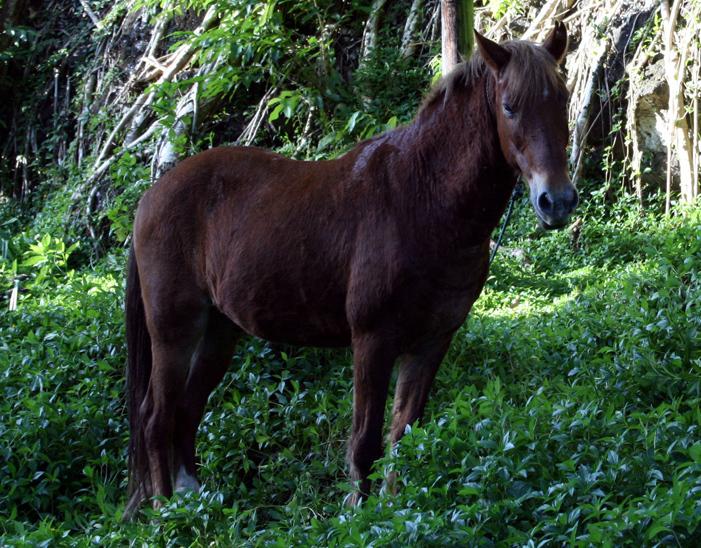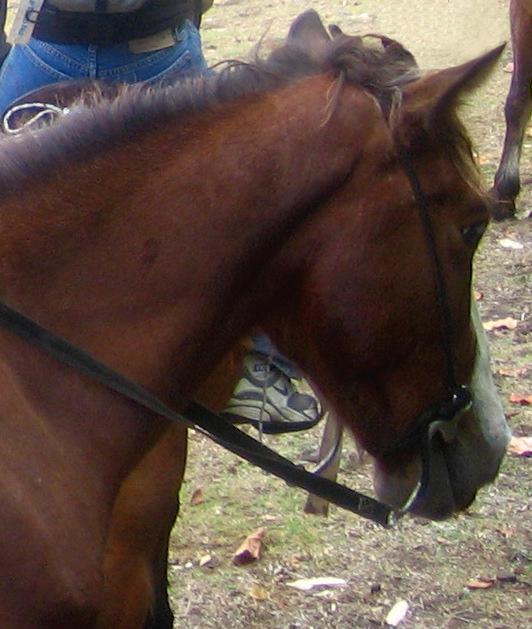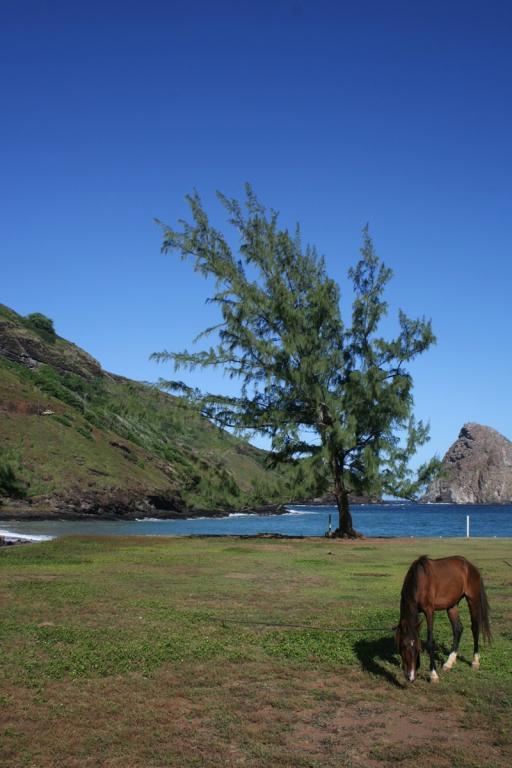
Continent: Oceania
Country: French Polynesia
Weight: 400 – 500 kg
Height: 140 – 145 cm



The Marquesan Horse is an equine population endemic to French Polynesia, established in the Marquesas Islands.
Thus, the Marquesan Horse may originate either from an early release in the 16th century, from confirmed imports in the 19th century, or from a combination of both. Adapted to the mountainous terrain and challenging living conditions of the islands, these horses have developed a natural hardiness and a gentle temperament, becoming a key part of the region’s cultural heritage.
The Marquesan Horse is bred exclusively in the Marquesas Islands, French Polynesia. It is mainly found in valleys and plateaus of the inhabited islands, where herds live in semi-freedom.
– Mountainous terrain with steep slopes and deep valleys requires agile, enduring horses.
– The tropical climate, with alternating wet and dry seasons, affects forage availability.
– Horses often live in semi-freedom, gathered as needed by breeders for work or sale.
– Traditional use remains important: for carrying loads, inter-valley travel, or participation in local celebrations.
The Marquesan Horse holds particular genetic value due to its island isolation and unique adaptation to the Marquesan environment.
This population descends from ancient crossbreeds, likely between Iberian horses (Andalusian or Chilean) and a few later imports.
Its geographic isolation led to strict natural selection, favoring:
This evolution preserved certain original traits while shaping unique local characteristics.
Living in rugged terrain and a humid tropical climate with dry seasons, the Marquesan Horse developed:
This population is threatened by reduced numbers and uncontrolled crossbreeding with imported horses. However, its gene pool remains a valuable source of island-adapted traits, useful for preserving other breeds in tropical climates.
The small population size increases the risk of inbreeding.
To secure its future, the Marquesan Horse would require the creation of an official studbook and a targeted breeding program, which are still lacking.
The Marquesan Horse is one of the rare insular horse populations in the Pacific. Its history blends local legends, maritime exploration, and cultural exchange.
Some sources claim the first horses arrived in 1595, brought by Álvaro de Mendaña’s Spanish expedition from Peru to the Solomon Islands. Some horses of Iberian origin (likely Andalusian) may have been abandoned or released in the Marquesas, adapting and forming a semi-wild population.
The most well-documented introduction occurred around 1840, when French admiral Abel Bergasse du Petit-Thouars offered Chilean horses to chief Iotete on Nuku Hiva.
These horses, of Criollo lineage (of Spanish origin), were known for their endurance and toughness.
Later, missionaries such as Bishop Dordillon reinforced the population with additional imports.
Once released, the horses reproduced naturally in the valleys and plateaus of the main islands (Nuku Hiva, Hiva Oa, Ua Pou, Ua Huka).
Geographic isolation led to strong natural selection, producing a medium-sized, robust, and agile horse adapted to rugged terrain.
In the 20th century, motorization reduced the horse's utility, leading to a decline in numbers.
Occasional crossbreeding with imported horses began to dilute original traits.
Today, despite reduced numbers, the Marquesan Horse survives—often in semi-freedom—and remains a powerful cultural symbol of the archipelago.
Over generations and through insular isolation, the Marquesan Horse has developed a temperament that reflects both its hardiness and its close relationship with humans.
The Marquesan Horse has strong cultural and tourism potential, but its long-term future depends on conservation and promotion measures.
The Marquesan Horse is known for its robust health, shaped by centuries of adaptation to a demanding island environment.